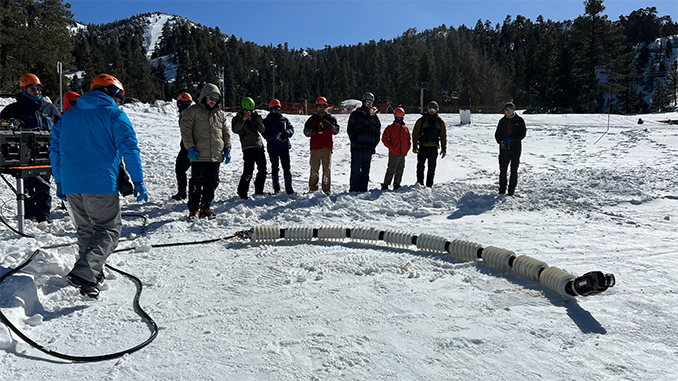
Traditional wheeled rovers like Curiosity and Perseverance on Mars are vital to planetary exploration. But hard-to-reach areas of interest like ice fissures on Saturn’s moon Enceladus or lava tubes on Earth’s Moon pose a challenge beyond the reach of current robots.
So how about a multi-segment snake-like robot capable of slithering its way into otherwise inaccessible sites bringing cameras and other instruments to bear, capturing contextual data far beyond the reach of a large rover?
That’s the idea behind NASA’s Exobiology Extant Life Surveyor, or EELS, a self-propelled autonomous robot “inspired by a desire to look for signs of life in the ocean hiding below the icy crust of … Enceladus by descending narrow vents that spew geysers into space,” NASA says in a description.
EELS technology is being tested by engineers at NASA’s Jet Propulsion Laboratory to determine the feasibility of sending such robotic snakes to other worlds or even to deploy them on Earth.
“It has the capability to go to locations where other robots can’t go,” said JPL Project Manager Matthew Robinson. “Though some robots are better at one particular type of terrain or other, the idea for EELS is the ability to do it all. When you’re going places where you don’t know what you’ll find, you want to send a versatile, risk-aware robot that’s prepared for uncertainty – and can make decisions on its own.”
The team began building an initial prototype in 2019 and is now conducting monthly field tests to refine the hardware and software. The robot weighs about 100 kilograms (220 pounds) and is 4 metres (13 feet) long, made up of 10 segments that rotate using screw-like treads to move across ice and other surfaces.
EELS version 1.0 has been tested on sand in JPL’s “Mars Yard,” on snow at a ski resort and on ice at an indoor ice rink. The robot uses four pairs of stereo cameras to create a 3D map of its surroundings and is equipped with a laser lidar system to measure obstructions, allowing its computer to calculate a safe route forward.
The team tested the snake’s “head” in a glacial shaft in the Rocky Mountains and plans to return in September with a version of EELS that will test sub-surface mobility.
“There are dozens of textbooks about how to design a four-wheel vehicle, but there is no textbook about how to design an autonomous snake robot to boldly go where no robot has gone before,” said Hiro Ono, the EELS principal investigator at JPL. “We have to write our own. That’s what we’re doing now.”



